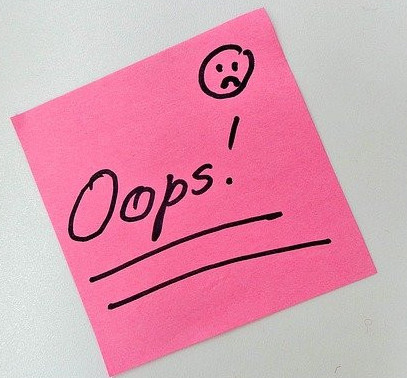
The anus has always taken a fair share of the brunt of the delivery process, second only to the vagina itself. The trauma, the injuries and the pain inflicted on the anus results in the leakage of primarily gas in most mild cases and in the severe cases actual pooh from the anus results when you least expect it.
Postpartum fecal incontinence is as a result of injury to the anal sphincter during the delivery process. This distressing disorder affects about 2 to 20% of the delivery and most patients usually do not report the symptoms to the doctor either out of embarrassment or due to lack of information on availability of treatment options.
Postpartum fecal incontinence is classified as either involuntary passage of flatus, liquid or solid ( urge fecal incontinence) or unrecognized anal leakage (passive fecal incontinence).
Causes
Episiotomy-
The improper use of episiotomy especially the median episiotomy type is a risk factor for the development of fecal incontinence especially when the episiotomy is extended down to the anal sphincter disrupting the sphincter and then not properly repaired afterwards.
Third Degree Perineal Tear
When the delivery is unsupervised and you push with the head of the baby not guarded as it delivers it has a higher likelihood of leading to a 3rd or 4th degree perineal tear with resultant development of incontinence afterwards
Vacuum and Forceps Delivery
Vacuum cup and forceps add an extra dimension to the delivery as the instruments impact on the pelvic floor and disrupt the floor and smooth muscles and can lead to development of incontinence following delivery.
Big Babies
Women delivering big babies vaginally are at risk of developing fecal incontinence in addition to the other co morbidities associated with extra large babies like prolapse, cystocele and urinary incontinence.
How Fecal Incontinence Presents
In the mild form of fecal incontinence you will notice just involuntary passage of gas occurring days following delivery. This can progress to passage of liquids and in the severe case leakage of solids. The incontinence can last for a few weeks to months with gradual resolution of the symptoms as you heal from the effects of the pregnancy. Some of the more common presentations are:
You have sudden urges to pooh that you cant control
You pooh on yourself without knowing you did
You sometimes leak pooh when you pass gas
Though major incontinence rarely resolves on its own, there are measures you can take to hasten the recovery process. you should note that because the anus is used daily unlike injuries in placces that are at rest, this can actually impact on the duration it takes for the anus to heal completely.
Strategies For Treating Fecal Incontinence
Manage Your Bowel Movements
Ensure that you eat appropriately by avoiding hard to digest food items and gas producing food items like high protein diets. You should also consume a lot of high fiber diets that aids bowel movement. These will make it easy for you to maintain your bowel movements. Maintaining your bowel movements will assist you to avoid constipation as constipation will lead to breakdown of any perineal repair done which will worsen the incontinence .
Medications
In situations where it becomes difficult to control the bowel movements medications may be required to control the diarrhea or constipation that is an obstacle to your management of the incontinence.
Liberal Fluid Intake
The intake of liberal amounts of fluid will help the body system to maintain good metabolism and aids in ensuring that the perineal blood flow is optimal to enhance healing as perineal health will lead to a fast return to normalcy and prompt healing of the fecal or anal incontinence
Sitz Bath
Sitz bath, either the herbal sitz bath or the standard orthodox sitz bath has been shown to be effective in healing the scars and injuries associated with your delivery and also aids in the healing of episiotomies when used in labor and delivery . Your use of sitz bath immediately following delivery will hasten the resolution of incontinence as it helps the anal smooth muscles to contract better and reduce the spate of involuntary gas leakages and later goes on to protect against liquids and solids leakage.
Kegels Exercise
The kegel exercise improves the tone of the muscles of the pelvic floor and also the muscles of the anus. It is a preeminent exercise in all things perineal so you should do your kegels again and again and again.
To do Kegels:
- Make sure your bladder is empty
- Then sit or lie down
- Tighten your pelvic floor muscles by squeezing your legs and anus tight as if you are for example sitting on a marble and then trying to lift the marble
- Hold it tight and count for 5 seconds
- Relax the muscles and count for 5 seconds
- Repeat this 10 times and do it 3 times per day
If you do kegels properly you should expect good results within weeks. You should make Kegels a daily routine for continued and permanent benefit.
Continence Products
These are pads you put in your underpants and plugs in your bottom to prevent leakage . They are temporary measures while you work towards a permanent solution.
Surgery
Surgery may be resorted to finally if all else fails to address fecal incontinence. The type and scope of the surgical repair will be determined by your doctor after appropriate review of your case.
Talk To Your Doctor
As embarrassing as fecal or anal incontinence is, you should not be ashamed to talk to your doctor about it . Your doctor should be able to advise on the best possible treatment plan and if there is need to involve a pelvic floor therapist in the management of your incontinence. Talking to your the doctor should also help to rule out any other possible medical conditions that may be coexisting with fecal or anal incontinence. He will be able to also advise about surgery if it is a required procedure if all other efforts have failed.
Preventive Measures
It is difficult to predict who will get anal incontinence as the causative factors are varied extending from patient factors to the factors related to the delivery itself and to the attendant at the delivery. Taking appropriate care at each stage of the labor and delivery process by you adhering to instructions during the delivery process, being attended to by an experienced and caring caregiver and minimal use of instrumentation and reverting to a cesarean delivery in difficult cases will go a long way in limiting the occurrence of fecal incontinence.
Conclusion
Fecal incontinence is embarrassing, distressing and depressing and should be addressed as quickly as possible in the postpartum period. Patients consider it shameful to report and the doctor must specifically ask for its occurrence in the postpartum and not wait for the patient to volunteer the information. This way the extent of the problem will be discussed and proper treatment offered to the new mother.
Dr mawa
To your postnatal health and freedom
mypostnatalmanagement.com

